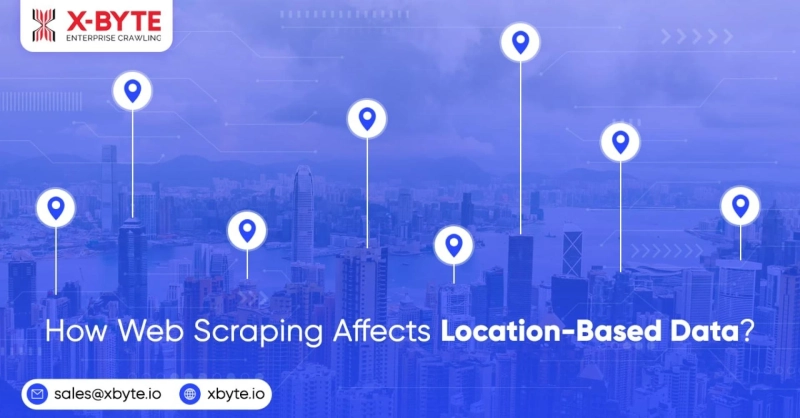Online Data is Becoming More Localized
The days of a website showing the same information and data to all users are quickly coming to an end. Depending on the user's location, sites dynamically display various data and information. In this blog, we'll look at how this development affects web scraping and how internet data collection must respond. The Price or availability is generally the information that varies depending on the location. The price that one person sees, or if a product is available to the public for delivery, or pick up, will differ depending on where the individual is located.
E-Commerce Data
Traditional businesses and manufacturers are increasingly turning switching to internet shopping due to Covid-19. On the other hand, physical things have always been delivered locally, even if there are no stores. Let us take an example of Target.com’s location-specific options.
When you first visit Target.com, the site strives to make the user experience as simple as possible by guessing your location.
This means you'll have fewer keystrokes to make when choosing a store or location,
If this location "guessing" is inaccurate, or and if you're not shopping at the Target.com-guessed location, you can enlarge the panel and select a few possibilities depending on various factors.
The purpose of the websites is to predict the location as accurately as possible without compromising the customer experience, such as forcing users to choose a location before visiting the website or making it very difficult for them to explore or buy on the site.
How Do Websites Will Know the Location?
Websites use a variety of methods to identify your location, ranging from non-invasive to quite intrusive. Here are a few approaches that are currently in use.
IP Address
Each device accessing the Internet is assigned an IP (Internet Protocol) address. It is the number having the format 123.456.789.123 which is allocated to your Internet Service provider (ISP) and then either partially or completely assigned to your connection or device. When you access a site, your IP address is provided to them, and they can use GeoIP databases to look up your information. Websites can use these databases to connect an IP address to a specific address, such as a city, town, state, or nation.
You do not influence whether your IP address is sent to a website, but you can certainly try to mask it with services like VPNs. Here's an example of how to use the GeoIP lookup page to find an Amazon AWS IP address.
You can check the city and Zip code of the IP address that represents amazon AWS on the GeoIP lookup page.
GPS Location
This method relies on data from your device's hardware chips to determine its location using the Global Positioning System (GPS). This is a sensor tracking technology that is built in to most phones and certain laptops.
Apps can use the GPS position directly, or they can be sent to the web browser used to view the website. The website obtains the precise Latitude and Longitude coordinates of your position, which may be found everywhere on the planet.
The user can control who has access to this information at the device level as well as per-app or website level (in most cases).
Ways to Acquire Location-Based Data from A Website
The methods used to obtain location-specific data differ on every website, but they are often the following:Use the mapped location of your IP address.Allow your browsers (and thus the website) to use your location via GPS.Indicate a specific zip code or retail location.Impact of Location Specific Information on Web Scraping
The implications of adopting web scraping services for data collection as location-specific data become more popular are enormous.
On the other hand, marketers save money by eliminating the need to dispatch "mystery shoppers" to physical locations to check goods availability and cost. This information can now be acquired online with increasing precision. The data may now encompass the entire country, as well as all of a brand's stores and all of its brands. When compared to traditional methods, the savings are significant, and the data coverage is considerably broader and more frequent.
On the other hand, the cost of obtaining this information rises as a result of the necessity to collect information from large sites rather than a single one. The cost of buying IPs in every city or a particular location is higher because local IPs are available in every area.
In comparison to a location-neutral data gathering project, the page count that must be scraped increases since the location for each product must be established, which can take 2 to 3 times the number of pages.
Examples of Location-Based Access on Famous Websites
How you will set the location
Setting location on Walmart.com
How Does Website Will Automatically Choose GPS Location?
For example, Walgreens.com is requesting permission to access the computer's GPS position with the Edge browser. When a website requests this information, other browsers display identical prompts.
For any queries, Contact X-Byte Enterprise Crawling.
Request for a quote!
For more visit: https://www.xbyte.io/how-web-scraping-affects-location-based-data.php


